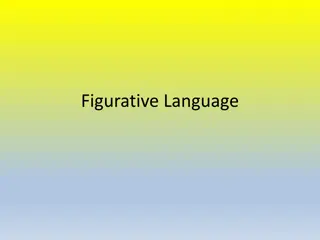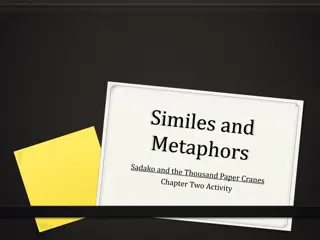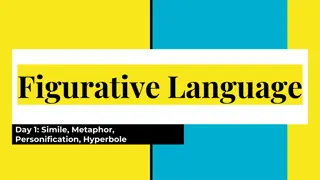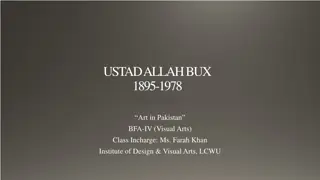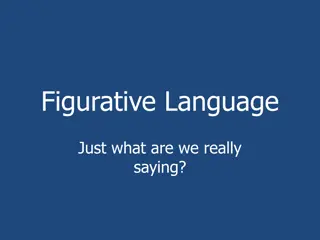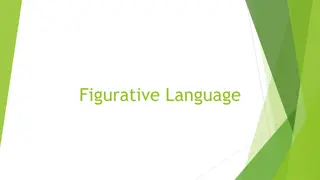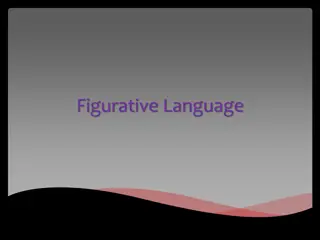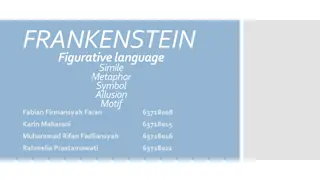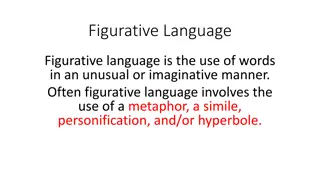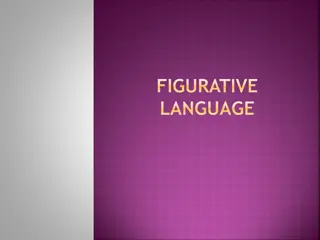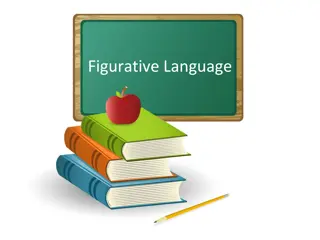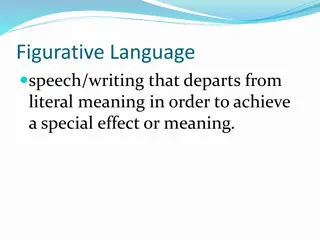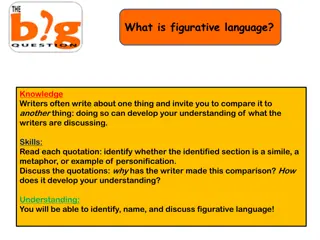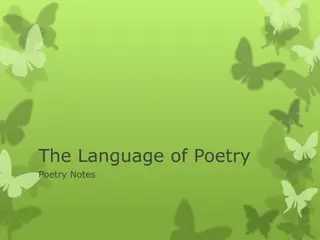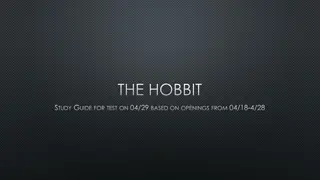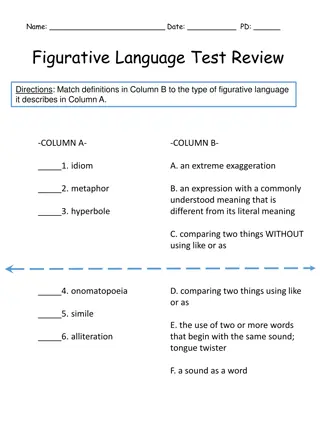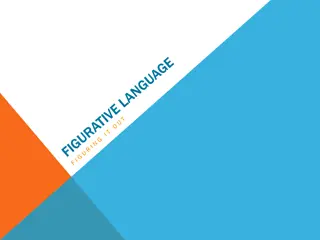
Mastering Figurative Language: Metaphors, Similes, Alliterations, and Personification
Discover the power of figurative language with metaphors, similes, alliterations, and personification. Learn how to enhance your writing through vivid comparisons and creatively personifying non-human objects. Dive into examples and understand the nuances between similes and metaphors.
Uploaded on | 1 Views
Download Presentation

Please find below an Image/Link to download the presentation.
The content on the website is provided AS IS for your information and personal use only. It may not be sold, licensed, or shared on other websites without obtaining consent from the author. If you encounter any issues during the download, it is possible that the publisher has removed the file from their server.
You are allowed to download the files provided on this website for personal or commercial use, subject to the condition that they are used lawfully. All files are the property of their respective owners.
The content on the website is provided AS IS for your information and personal use only. It may not be sold, licensed, or shared on other websites without obtaining consent from the author.
E N D
Presentation Transcript
Figurative Language- Elements of Style English
Metaphors What is a metaphor??? A metaphor is a comparison that shows how two things that are not alike in most ways are similar in one important way. Metaphors are a way to describe something. Authors use them to make their writing more interesting or entertaining.
Examples of Metaphors Mrs. Keyes is a walking textbook for social studies information! Our old cat, a bolt of lightning, always caught it s prey. The drummer was a beast and played with so much energy.
Simile vs. Metaphor UNLIKE similes, which use the words as or like to make a comparison, METAPHORS STATE THAT SOMETHING IS SOMETHING ELSE. If Johnny wasn t such a hog, we would have more pizza.
Simile Simile a comparison between two things that are basically dissimilar using like or as to make the comparison. Example: My papa s hair is like a broom.
Alliteration Alliteration occurs when a series of words in a row (or close to a row) have the same first consonant sound. For example, She sells sea- shells down by the sea-shore or Peter Piper Picked a Peck of Pickled Peppers are both alliterative phrases
Alliteration Examples Jesse s jaguar is jumping and jiggling jauntily. Walter walked wearily while wondering where Wally was. Mike s microphone made much music. Ralph s reindeer rose rapidly and ran round the room.
Personification Personification is a figure of speech in which a thing, an idea or an animal is given human attributes. The non-human objects are portrayed in such a way that we feel they have the ability to act like human beings.
Personification Examples Look at my car. She is a beauty, isn t it so? The wind whispered through dry grass. The flowers danced in the gentle breeze. Time and tide waits for none. The fire swallowed the entire forest.
Sensory Details Sensory Details: sight, sound, touch, smell, taste
Repetition Repetition the act of repeating words or phrases for dramatic effect Example: In Hairs, the words hair, holding you, and rain are repeated.
Hyperbole Hyperbole is the use of exaggeration as a rhetorical device or figure of speech. Some common examples: I am so hungry I could eat a horse. I had a ton of chores to do.
Hyperbole Examples A thousand tears were shed as the victory slipped through his hands. I had to wait an eternity in the line at the deli. My skin was as dry as the Sahara after I went into the ocean. ****Create 2 of your own hyperboles*****
Skill 3: Allusion An allusion is a figure of speech that refers to a place, person, or something that happened. This can be real or imaginary and may refer to anything. The reference can be direct or may be inferred, and can broaden the reader s understanding. Ex. With the strength of Hercules, he hurled both men onto his back and carried them to safety.
Allusion Examples I was surprised his nose was not growing like Pinocchio s. This refers to the story of Pinocchio, where his nose grew whenever he told a lie. When she lost her job, she acted like a Scrooge, and refused to buy anything that wasn t necessary. Scrooge was an extremely stingy character from Charles Dickens , A Christmas Carol. He was a real Romeo with the ladies. Romeo was a character in Shakespeare s play, Romeo and Juliet, and was very romantic in expressing his love for Juliet. Read more at

